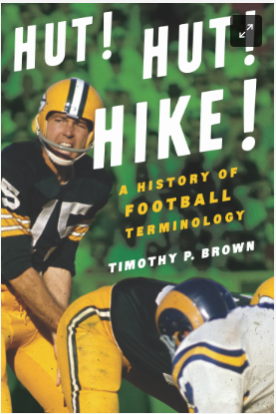The game of baseball has a long and storied history of its players, teams and managers. The stats, the championships, pitching duels and so much more make this one of the most interesting items to study and watch.
Sports History
Johnny Mize and the Roar of Home Runs
From 1936 to 1953, Mize carved his name onto baseball's Mount Rushmore with a potent cocktail of effortless power and quiet confidence.
His bat was a conductor, orchestrating symphonies of soaring home runs. Three hundred fifty-nine dingers, each one a thunderous testament to his strength and swing mechanics honed in rural Georgia. He wasn't just a home run king; he was a complete hitter, batting .312 with a knack for clutch hits that made opposing pitchers whimper. Mize's 1947 season remains legendary, where he tied Ralph Kiner for the home run crown while striking out fewer than 50 times, a feat unmatched to this day.
But Mize wasn't just about statistics; he was a cornerstone. He anchored the St. Louis Cardinals during their golden age, his bat instrumental in securing World Series titles in 1942 and 1946. Later, he became a valuable bench player for the New York Yankees, finding the fountain of youth with three consecutive World Series rings from 1949 to 1951. His presence inspired, his clutch hits brought relief, and his booming home runs brought crowds to their feet.
However, Mize's story isn't solely one of triumph. World War II robbed him of three prime years, while injuries and age eventually tamed the Big Cat's roar. Yet, he retired without bitterness, transitioning to coaching and scouting, forever a part of the game he loved.
Luke Appling Two Decades of Solid Baseball
He was an intriguing player who defied the odds and remained a force for an astonishing 20 seasons. Dive deeper into Luke Appling's remarkable career. This article explores his journey from small-town beginnings to becoming a Chicago White Sox mainstay, a seven-time All-Star, and a prestigious Baseball Hall of Fame member.
Baseball Hall of Fame infielder Luke Appling was mainly a shortstop in Major League Baseball playing his entire career for the Chicago White Sox (1930–1950).
He was elected to Cooperstown in 1964. 20 seasons of outstanding baseball were played by Appling, who posted a .310 batting average (2,749-for-8,856) with 1,319 runs, 440 doubles, 102 triples, 45 home runs, 1,116 RBI, 179 stolen bases, 1,302 bases on balls, .399 on-base percentage and .398 slugging percentage. He finished his career with a .948 fielding percentage. Born April 2, 1907, in High Point, North Carolina. One of the top MLB players to have worn the Number 4 Jersey.
Harmon Killebrew A Homerun Machine
Killebrew was known for his towering home runs and amassed an impressive resume:
573 career home runs (12th all-time at retirement)
8 seasons with 40 or more home runs (second only to Babe Ruth in the AL)
6-time American League home run leader
3-time American League RBI leader
1969 American League Most Valuable Player Award
Though a quiet man off the field, Killebrew's bat spoke volumes. He helped lead the Twins to the postseason three times and was inducted into the National Baseball Hall of Fame in 1984.
Born June 29, 1936, in Payette, Idaho, was Baseball Hall of Fame First base and Utility man Harmon Killebrew. Harmon was a thirteen-time MLB All-Star; AL MVP 1969; and a six-time AL Home Run leader during his illustrious career in baseball. He played on the rosters of the Washington Senators and Minnesota Twins. The man could make the ball find the back of the fence, Killebrew had the fifth-most home runs in major league history at the time of his retirement. He was second only to Babe Ruth in American League (AL) home runs, and was the AL career leader in home runs by a right-handed batter. Harmon was known for both the frequency and distance of his homers. He hit the longest home runs ever recorded at Minnesota's Metropolitan Stadium [520 ft (160 m)], and Baltimore's Memorial Stadium [471 ft (144 m)], and was the first of four players to hit a ball over the left field roof at Detroit's Tiger Stadium.
Ray Dandridge Thirdbase Sensation
Dandridge's prime years coincided with the Negro Leagues' peak. He played for several teams, primarily the Newark Eagles, showcasing his talent across the United States and even winter seasons in Latin America. Despite his impressive stats, by the time Major League Baseball integrated, Dandridge was considered past his prime at age 35.
Undeterred, Dandridge signed with a minor league affiliate of the New York Giants. Though excelling there, winning Rookie of the Year and even mentoring a young Willie Mays, he never received the call-up to the majors.
Born August 31, 1913, in Richmond, Virginia, was Baseball Hall of Fame, Third Baseman, Ray Dandridge. This legend was a three-time Negro League All-Star for 1935, 37, 44. Ray also won the American Association MVP 1950 as a member of the Minneapolis Millers.
Dandridge also played for the Indianapolis Stars, Detroit Stars, Nashville Elite Giants, Newark Dodgers, and the Newark Eagles. Dandridge became known for his short, bowed legs, which later led to nicknames including "Hooks" and "Squat".
Casey Stengel
Stengel was traded to the Pittsburgh Pirates in 1918; however, he enlisted in the Navy that summer, for the remainder of World War I.
After returning to baseball, he continued his pay disputes, resulting in trades to the Philadelphia Phillies (in 1919) and to the New York Giants (in 1921). This legend of the game was on the World Series Champions New York Giants in 1921, 22. Stengel also was the manager of the New York Yankees was the won the World Series seven times. He is also famously the New York Mets' first manager.
Mike Mussina - HOF Pitcher
"Moose" was a dominant right-handed starting pitcher who carved his name in baseball history during his 18-year MLB career. After starring in high school, he honed his skills at Stanford University, where he was a two-time All-American. Drafted by the Baltimore Orioles in the 1st round of the 1990 MLB Draft, Mussina made his major league debut in 1991. He quickly established himself as a force to be reckoned with, winning at least ten games in his first ten seasons. Peak years came in the late 1990s. He finished second in the Cy Young Award voting in 1996 and won a Gold Glove Award for his fielding excellence. 1997, he led the Orioles to the American League Championship Series, showcasing his big-game prowess. Following the 2000 season, Mussina signed a lucrative free-agent contract with the New York Yankees. He seamlessly transitioned to the Bronx and continued his winning ways. He won six American League East titles in his eight seasons with the Yankees and reached the postseason seven times.
Joe Mauer A Pillar of Excellence Behind the Plate
-A Model of Consistency:
-Drafted first overall by the Twins in 2001, Mauer spent his entire 15-year career with the team, a rarity in modern baseball.
-Renowned for his exceptional hitting ability, he captured three American League batting titles (2006, 2008, 2009), a feat no other catcher in history has achieved.
-Mauer finished his career with a stellar .306 batting average, showcasing remarkable consistency throughout his tenure.
-Defense and Durability:
-While known primarily for his offense, Mauer was also a highly skilled defensive catcher. He won three Gold Glove Awards (2008, 2009, 2010), highlighting his defensive prowess.
-Notably, he maintained a high fielding percentage throughout his career, a testament to his ability to handle pitching staffs and control the game behind the plate.
-A Rare Combination:
-Mauer's ability to excel at both hitting and defense made him a truly unique talent. He was a complete catcher, contributing significantly on both sides of the ball.
-In 2009, he achieved the coveted "Triple Crown" for catchers, leading the league in batting average, on-base percentage, and slugging percentage.
Accolades and Legacy:
-Mauer's impact transcended individual statistics. He was a six-time All-Star and an instrumental part of the Twins' success for over a decade.
-In 2024, he was inducted into the Baseball Hall of Fame, a fitting recognition of his exceptional career.
-Summary of Mauer's Life & Career
Born April 19, 1983, in St. Paul, MN, was Joe Mauer, legendary MLB Catcher and first baseman. Joe Mauer played wearing the number 7 on the Minnesota Twins (2004-18) for 15 seasons as he batted 0.306 for his career, had an On Base percentage of 0.439, with 143 career Home Runs, and 3 Gold Glove Awarded Seasons. Mauer, during his career, earned five Silver Slugger awards, an MVP honor, and three Batting Titles. It is no wonder why Mauer is one of the top MLB players to have worn the Number 7 Jersey.
Pete Hill Baseball Star
Hill's journey began on the East Coast, playing for teams like the Pittsburgh Keystones and the Philadelphia Giants. He was known for his defensive prowess in center field, boasting a strong arm and exceptional range. But his true brilliance shone at the plate. A feared line-drive hitter with blazing speed, Hill earned comparisons to baseball greats like Ty Cobb.
Throughout his career, Hill played for numerous powerhouse teams, including the Chicago American Giants, where he served as team captain. He was a key figure in the league's early years, and his baseball acumen extended beyond playing. After transitioning into a player-manager role, Hill led teams like the Detroit Stars and the Milwaukee Bears.
Born October 12, 1882, in Culpeper, Virginia was Baseball Hall of Fame Outfielder Pete Hill. This legend held a Negro League lifetime batting average of .326. Besides playing he was also a manager. During his long career, he played for the Philadelphia Giants, Leland Giants, Chicago American Giants, Detroit Stars, Milwaukee Bears, and Baltimore Black Sox.
Ross Youngs A Hall of Fame Flame Cut Short
Early Hustle and Minor League Struggles:
Youngs' baseball journey began in the minor leagues, where he displayed impressive hitting and fielding skills. However, his early batting average was underwhelming.
A Breakout with the Giants:
Youngs' fortunes turned around when he signed with the New York Giants in 1916. He quickly established himself as a valuable asset, known for his consistent hitting, speed on the basepaths, and solid defense. Youngs batted over .300 in eight consecutive seasons, showcasing his exceptional hitting ability.
World Series Hero and Postseason Prowess:
Youngs' talent shone brightest on the biggest stage. He was instrumental in helping the Giants reach the World Series four years in a row (1921-1924) and win it twice (1921, 1922). He even made history in the 1921 World Series by becoming the first player to achieve two hits in a single inning.
A Tragic End and Enduring Legacy:
Youngs' career was abruptly halted in 1926 when he was diagnosed with a fatal kidney disease. He passed away tragically young at the age of 30. Despite his shortened career, Youngs left a lasting impression on the game. With a lifetime batting average of .322, a knack for clutch hitting, and a well-rounded skillset, he earned a well-deserved place in the Baseball Hall of Fame in 1972.
Ross Youngs' legacy serves as a reminder of the potential that can be cut short and the enduring impact a player can have despite an abbreviated career.
Complete life and career bio on Ross Youngs. Born April 10, 1897 in Shiner, Texas, was Baseball Hall of Fame Right Fielder, Ross Youngs. Youngs was a heck of a ball player for the New York Giants from 1917 through 1926. Giants longtime manager, John McGraw gave Youngs the nickname "Pep" due to his hustle.
Jack Chesbro Early Baseball Super Star
That same '04 season, he set single-season records by starting 51 games and completing 48 of them. The Veterans Committee chose Jack Chesbro for induction in to the National Baseball Hall of Fame in 1946.
February 7 Jersey Numbers

Here are some jersey numbers in team sport history that stuck out. February 7, 1949 - Number 5, Joe DiMaggio became the first ball player to earn $100,000 a yearas he did so under contract with the New York Yankees . February 7, 1958 - The Brooklyn Dodgers official...
- The use of a "banner" counts as 10 words!
February 6 Jersey Numbers
Sports history is made every day of the year. We will preserve at least a small sampling from some great athletes every day based on the uniform number they wore. 31 - 9 - 14 - 83 - 7 - 16 - 22 - 80 - 11 - 84 - 10 - 83 - 12 February 6, 1926 - St Louis Browns acquire catcher Wally Schang from ...
February 5 Jersey Numbers

Here is what happened in Sports Jersey History on February 5: Kareem hits a new NBA high, Hines hauls in a big one and Bob Douglas is honored. Our Sports Jersey Take of the Day is from historian Joe Ziemba. Listen in to learn more about sports history along with me from the unif...
- The use of a "banner" counts as 10 words!
The Oregon Agricultural Hard Court Stars
(image) Members of the 1922 Oregon Agricultural College men's basketball team. From left to rightː Gill (forward), Hjeite (enter), and Feraley (forward), from February 5, 1922. This image is courtesy of Wikimedia Commons. We know the OAC by a different name today, Oregon State. The Oregon Ag...
The 1897 Strathcona Hockey Team
.jpg?https://jerseydispatch.com/pfeL/p/c312642c0431e75b485e432232c99c1c/website/Sports-History-Photo-of-the-Day/February-Images/February-4-Image/images/.Strathconas_First_Hockey_Team_(21879505322).jpg)
Formal portrait of Strathcona's First Hockey Team (1897). Stratchcona resides in British Columbian Province, and is the oldest residential neighbourhood of Vancouver, (image) Some players are labeled by number. 1. Bob Blain 2. Jim Blain 3. Billy Sharkles 4. Fred Richards 5. J. McIn...
- The use of a "banner" counts as 10 words!
February 4 Jersey Numbers

Here is what happened in Sports Jersey History on February 4 : We talk about the great goaltending of Grant Fuhr and Ray Durbin of Row One Brand stops by to to discuss two of his favorite number 40s. Listen in to learn more about sports history along with me from the uniforms and jers...
- The use of a "banner" counts as 10 words!
Basketball
The jerseys of the hard courts have a great history all their own. ref. BasketballBaseball
Tops in Professional Baseball: The Evolution of the Uniforms & Top Players by the Numbers they Wore ref. BaseballHockey
The great history of the Hockey sweater jersey and the players than made them famous. ref. HockeyAuto Racing
When you want to just see who is the fastest, you catch a race! ref. Auto RacingAll Sports Jersey Dispatch Podcasts
Here is all of our Sports Jersey Dispatch Podcasts in one place! ref. All Sports Jersey Dispatch PodcastsUniform Numbers
The Jersey Numbers that make up the Hisory of Each Day of the Year ref. Uniform NumbersThe Roar of the Crowd home page
The historic sporting events where the fans went crazy ref. The Roar of the Crowd home pageOdds and Ends
The posts that are on the outskirts of sports jerseys and history but are relative all the same ref. Odds and EndsThoroughbred Racing
The Legends and History of Thoroghbred Horse Racing ref. Thoroughbred RacingFree Newsletter Subscription
Get a free copy of our daily sports history newsletter in your emai inbox each morning ref. Free Newsletter Subscription[]View and Print Results






